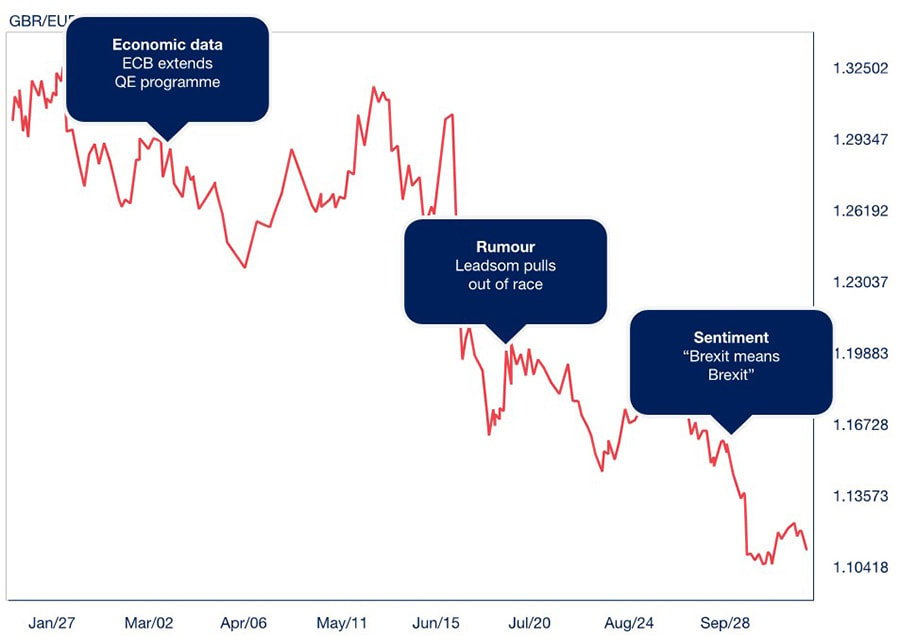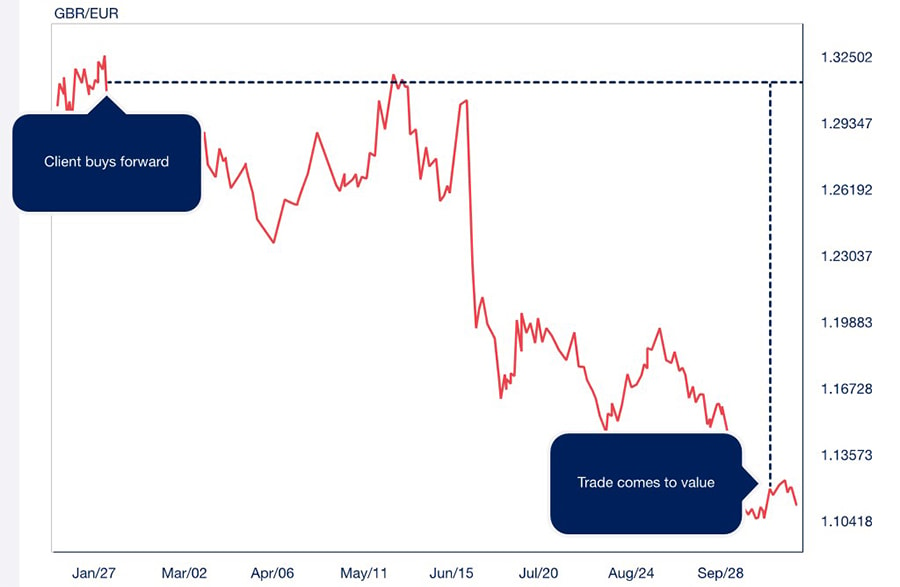Fluctuating exchange rates affect each and every one of us. Whether that relates to the cost of the imported goods you buy, or simply your spending power when you go on holiday, the price is dictated, in part, by the currency market.
How big is the currency market?
Approximately $5.3 trillion US dollars is traded daily, making the currency market the most traded in the world. Most of the action takes place in the UK, which is responsible for nearly 37% of activity. With markets opening in Sydney and closing at the end of trading in New York – with some added liquidity thrown in on a Sunday from the Middle East – it means that exchange rates are fluid for the vast majority of any given week.
What affects exchange rates?
Central bank policy is a key driver of exchange rates. In recent times, we have become accustomed to quantitative easing and the cutting of interest rates. Such loosening of monetary policy – or the opposite: tightening – will impact the strength of the bank’s respective home currency.
Economic data releases will also have an impact on exchange rates. A country’s gross domestic product (GDP) reading is much anticipated by markets as an indicator of economic strength. If the figure comes out better than expected, the currency appreciates in value and vice versa.
Political rumour can cause short-term price activity too. In the hours before it was confirmed, there were whispers that Andrea Leadsom was about to pull out of the 2016 Conservative party leadership race. A swift denouement to the battle that left one unopposed, experienced winner was music to traders’ ears, and the pound gained a couple of cents against the euro before any official announcement had been made.

This graph shows how the value of the pound against the Euro was affected by political events such as the EU referendum and Conservative leadership election
In the same way, the pound, which had been in the doldrums for several months, enjoyed a relief rally on the day the UK went to the polls for the EU referendum. Whispers that the remain camp would win comfortably proved wide of the mark and exacerbated sterling’s fall from grace in the days that followed.
However, the reality is that nobody has a crystal ball. A natural disaster can impact currency rates and uncontrollable natural forces are not ours to predict. Since the global economic crisis of 2008, markets have been trading as much off sentiment as they have all of the above, which makes risk management all the more critical.
What am I at risk of?
The most obvious currency risk relates to price as a result of unpredictable market volatility. It should be said, however, that “risk” need not be a dirty word. With exchange rate fluctuations, you have both upside and downside risk in play. If you import goods and the pound strengthens, those goods become cheaper. Similarly, if the pound depreciates, the reverse is true.
The only way to eliminate currency risk is to enter the market and secure an exchange rate. The time at which you enter the market will depend on your appetite for risk and the exchange rate at which your prices were budgeted at the start of the year or quarter. However, if you’re subject to time restraints, such as an invoice that needs to be paid today, you won’t have the luxury of waiting to see how the market trades over the coming days or weeks.
How do I best manage my currency risk?
Whilst the markets themselves are complex beasts, there are a handful of easy-to-use tools at your disposal to help you manage your currency risk. When entering the currency market, there are two types of contract available to you. A spot trade is an instruction to buy or sell currency at today’s foreign exchange rate. A forward contract, on the other hand, enables you to secure today’s rate of exchange for use on a future payment date. This is sometimes referred to as ‘hedging’ and is designed to protect you from adverse rate fluctuations.

Forward contracts can protect a business against fluctuating exchange rates
There are also two types of market order available to businesses when entering the currency market. A market order is an instruction to buy or sell currency when a pre-agreed rate is achieved. In addition to being a flexible way to make the most of volatility, an order should generally provide you with cover whenever the markets are trading. This means that you are protected outside of your own business hours.
While a limit order sits above the market and enables you to take advantage of upside risk, a stop-loss order sits below the market to protect you from falling prices. Limit and stop-loss orders can be used separately or in conjunction with one another. They are usually considered ‘good until cancelled’ (GTC) so remember to cancel any order placed before it is triggered if you no longer need to trade.
If foreign exchange impacts your company, it is useful to know that there is free guidance on offer out there. This will vary from provider to provider but a number of currency specialists build this in to their service, which may help you come to your own conclusion as to what is the right strategy for your business.
Key definitions
- Spot trade
- The purchase of a foreign currency at an exchange rate agreed 'on the spot' by the buying and selling parties. The exchange rate at which the transaction is processed is known as the spot exchange rate.
- Forward contract
- Also referred to as a 'currency forward' or 'FX forward', a forward contract is an agreement between two parties to buy or sell currency at today's exchange rate for use on a future payment date.
- Limit order
- An instruction to buy or sell a currency at a specific price or better, as agreed at the time of the order being placed.
- Stop-loss order
- An agreement to sell currency once it falls to a certain market price, thus limiting a business owner's loss in the event of declining exchange rates.
Are exchange rates the only thing I need to consider?
Price volatility will no doubt make up the main part of your risk management strategy, but by no means should it be your only consideration. At the outset of any relationship with a new liquidity provider, appropriate due diligence should be applied to counterparty risk. In other words, you need to ask yourself whether the provider in question is a reputable organisation to be doing business with.
If you work in more exotic territories, your background work should go further, taking into account whether your chosen partner has the right capabilities to trade the currencies required and what your backup plan is should that partner no longer be able to facilitate what you require. For example, what would the impact be on your business if your provider suddenly stopped trading an exotic currency leaving you temporarily unable to buy goods from a supplier?

Business owners should keep an eye on exchange rates when trading overseas
Whilst the exchange rate tends to dominate thought processes, at the heart of any currency trade is the payment itself. Timely delivery of funds is a necessity, as is the need to ensure that the full amount of money arrives in your chosen beneficiary account.
In the UK we have a number of different payment options – CHAPS, Faster Payment, BACS – and the same is true for international payments. The option that you use may depend on the importance of cost versus speed.
If you need to make a payment to a beneficiary in the Eurozone, it is possible to do so for same-day value. However, if time is not of the essence, you could consider a SEPA payment, which is the equivalent to the UK’s BACS solution. Whilst a SEPA payment will take 24 hours longer, it will generally be significantly cheaper.
There is no universal standard for international payment charges. Although individually these may not bankrupt you, the costs can start mounting up if you are paying up to £30 per payment. As well as considering the type of payment that will work best, you should also be aware that some providers will not charge you any payment fees.
When making international money transfers, you need to be mindful of unwanted deductions that can be taken from your payment. Funds are often wired via intermediary banks that deduct a small amount for the privilege. In the same way, beneficiary banks can levy a fee when crediting a payment to the beneficiary account. There are ways to protect your business against both charges so make sure you ask your partner before you make your next payment.
About the author
Nat Davison has 12 years' experience in the currency world. In his role as a partner at Frontierpay, he is responsible for key alliances and is often called on for comment as an industry spokesperson. Davison is married with two young children, and is an accomplished runner.






These cookies are set by a range of social media services that we have added to the site to enable you to share our content with your friends and networks. They are capable of tracking your browser across other sites and building up a profile of your interests. This may impact the content and messages you see on other websites you visit.
If you do not allow these cookies you may not be able to use or see these sharing tools.